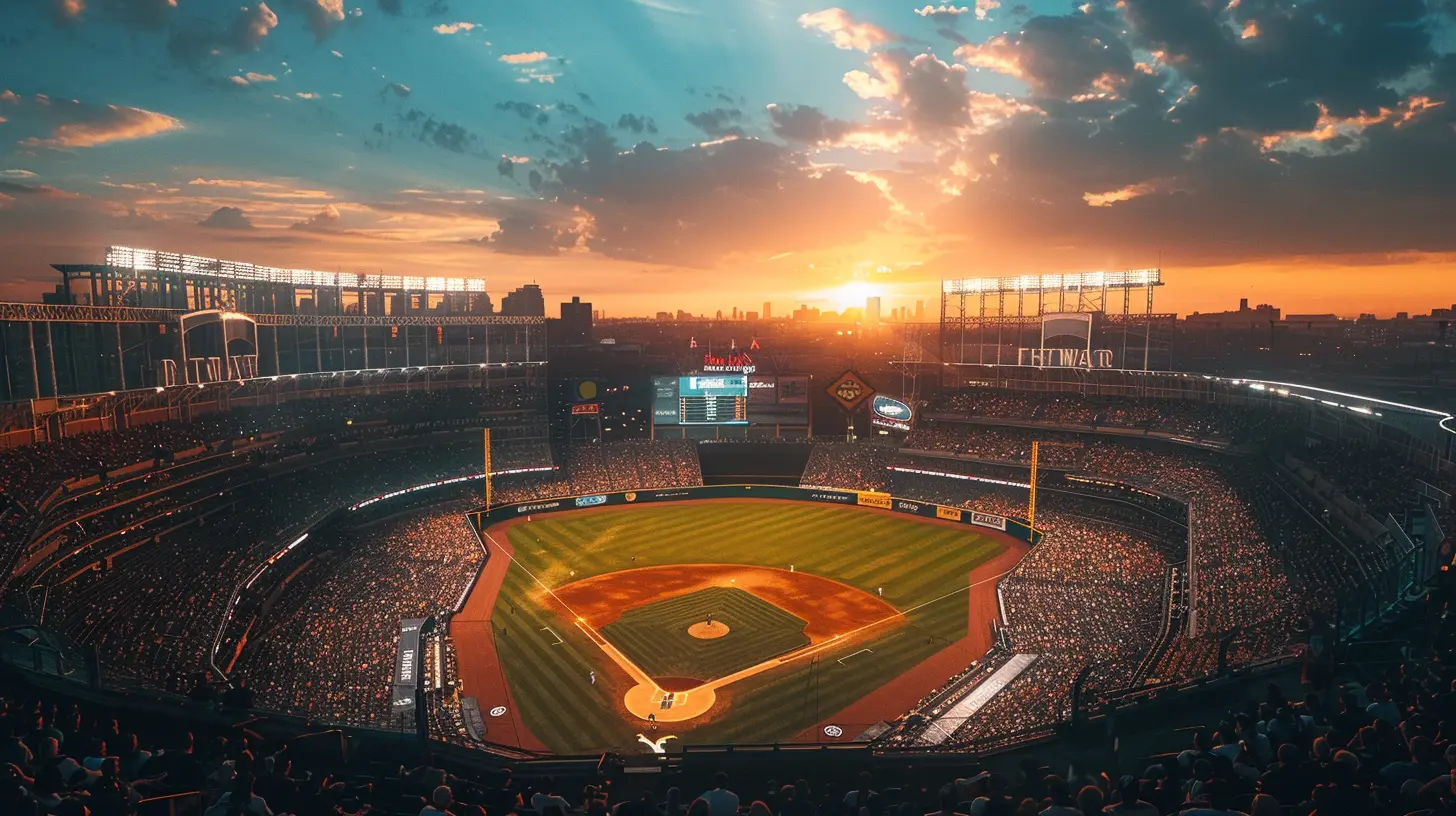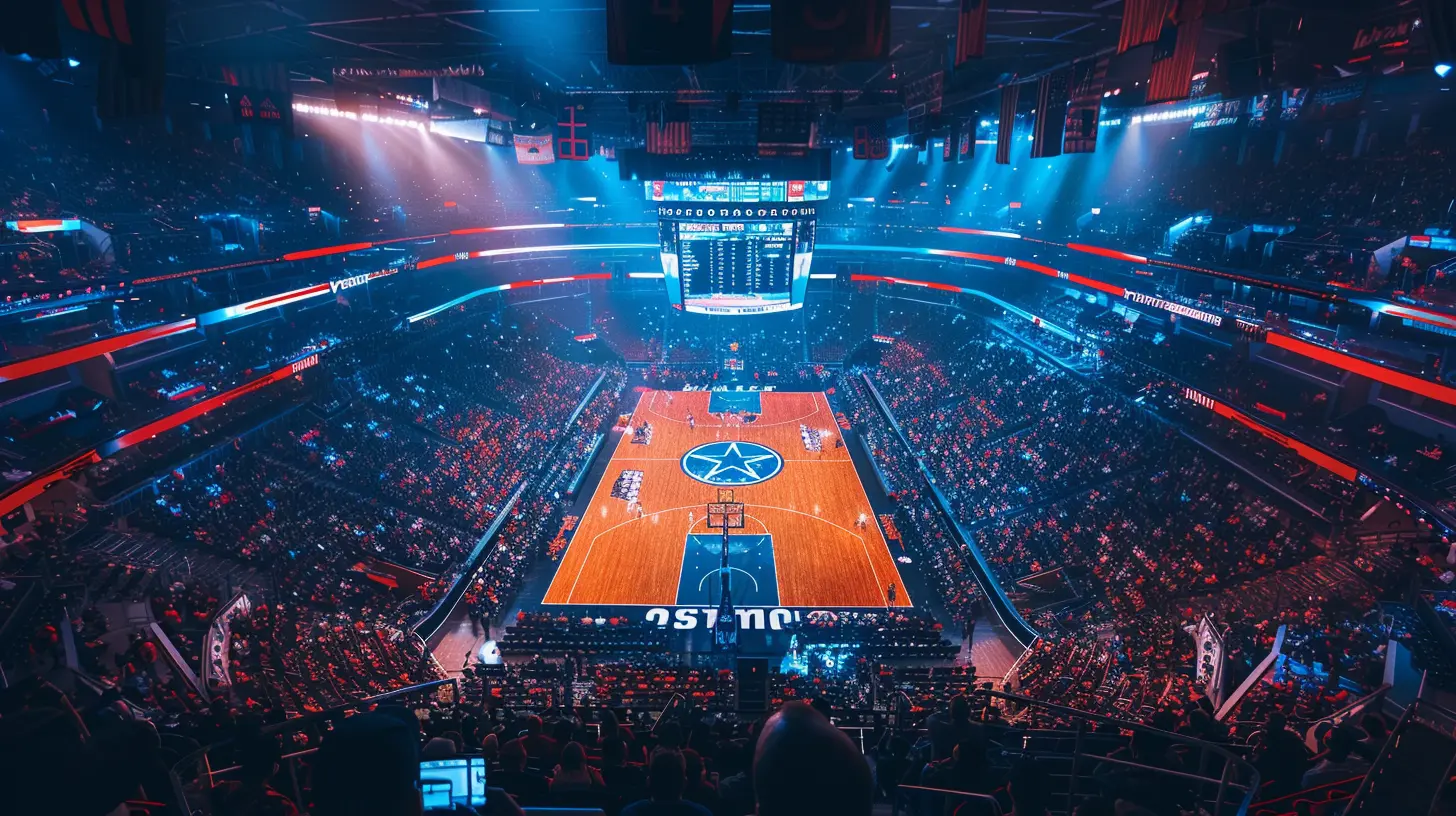All-Star Games and the Future of Fan Interaction: What to Expect
23 September 2025
All-Star Games have been a staple of professional sports for decades, bringing together the best of the best for a showcase of talent, skill, and entertainment. But let’s be honest—these games have evolved beyond just simple exhibition matches. With technology advancing at breakneck speed and fan expectations shifting, the way we engage with these events is changing dramatically.
So, what does the future hold for All-Star Games and fan interaction? Buckle up, because things are about to get exciting!

The Evolution of All-Star Games
All-Star Games have always been about spectacle. From the Home Run Derby in baseball to the Slam Dunk Contest in basketball, these events give fans a chance to watch elite athletes put on a show. But what used to be just a fun break in the regular season is quickly turning into a fan-first experience like never before.The days of passive spectating are fading fast. Fans today want engagement, immersion, and an experience that feels personal. And thanks to technology, that's exactly what they're getting.

High-Tech Fan Engagement: The Game-Changer
The rise of digital innovation is redefining what it means to "attend" an All-Star Game. Whether in the stands or watching from home, fans are now more connected to the action than ever before.1. Virtual Reality (VR) and Augmented Reality (AR) Experiences
Imagine putting on a VR headset and feeling like you're sitting courtside at the NBA All-Star Game or standing on the field during the MLB All-Star festivities. Sounds unreal, right? Well, not for long.VR and AR are revolutionizing the way fans interact with sports. Instead of just watching the game, fans can immerse themselves in it. AR-driven apps already allow fans to see player stats pop up in real time, while VR tech is creating fully immersive game-day experiences from the comfort of home.
2. Interactive Streaming and Real-Time Fan Participation
Live-streaming technology is no longer just about watching—it’s about engaging. Streaming platforms now allow fans to vote on in-game events, participate in live Q&A sessions with players, and even influence game decisions through real-time polling.Imagine being able to vote on which player should take the final shot in an All-Star Game or choosing who enters a skills competition next. These interactive features make fans part of the game rather than just spectators.
3. AI-Powered Personalization
Artificial intelligence is making sports content more personalized than ever. AI-driven platforms can now analyze what a fan likes—whether it's certain players, teams, or gameplay styles—and tailor their experience accordingly.Think about it: Instead of watching a generic broadcast, every fan could get a personalized feed showing their favorite players, exclusive behind-the-scenes content, and even AI-generated commentary based on their preferences. That’s next-level engagement.

The Rise of Social Media and Fan-Driven Content
Social media has completely changed the All-Star Game experience. It’s no longer just about what happens on the field or court—it’s about the conversations happening online.1. Players and Fans Interacting in Real Time
Athletes today aren't just stars on the court; they're influencers, content creators, and social media personalities. Players engage with fans before, during, and after the All-Star Game, giving behind-the-scenes glimpses, sharing their thoughts, and even responding to fan questions.A tweet from LeBron James during halftime? A TikTok dance challenge featuring baseball’s top stars? These moments keep fans engaged far beyond the final buzzer.
2. Fan-Created Content Taking Center Stage
Fans aren’t just consuming content—they’re creating it. Whether it's reaction videos, live commentary, or even deep-dive analysis on platforms like YouTube and TikTok, fan-generated content is a massive part of the All-Star experience.Leagues and teams are taking notice, often sharing fan-created content on their official pages and even incorporating it into live broadcasts. It’s a win-win—fans get recognition, and leagues get authentic engagement.

The Future of Live Attendance: More Than Just a Game
Going to an All-Star Game isn’t just about watching the action anymore—it’s about the entire experience. Sports organizations are pulling out all the stops to make attending these events a must-do for fans.1. Smart Arenas: The Stadium of the Future
Think of a "smart arena" like a high-tech amusement park. Cashless concessions, AI-driven crowd management, augmented reality replays on your phone, and even holographic appearances from sports legends.Attending a game in the future isn’t just about sitting in a seat anymore—it’s a fully immersive experience where technology enhances every moment.
2. Fan-Influenced Game Formats
One of the biggest changes coming to All-Star Games is how they're structured. We've already seen the NBA All-Star Game shift to a draft-style format, and leagues are constantly experimenting with new ways to keep things fresh.Could fans completely control lineups in the future? Pick the rules for a quarter? Vote on new, wild challenges for players? These ideas aren’t as far-fetched as they sound.
NFTs and Digital Collectibles: The New Autographs
The days of collecting paper tickets and signed jerseys are being replaced by digital assets.1. NFT Collectibles and Gamification
Leagues and teams are launching NFT-based memorabilia—limited-edition digital collectibles that can be owned, traded, and even used in virtual games. Imagine owning an exclusive NFT from a record-breaking performance in an All-Star Game.Some leagues are even gamifying these collectibles, allowing fans to earn points and rewards based on their digital collections.
2. Blockchain Ticketing and VIP Access
NFTs aren’t just about collectibles—they’re changing how fans access events. Blockchain-based ticketing can prevent fraud, offer exclusive perks, and even allow resale at fair market values.VIP access through NFTs? Imagine an NFT ticket that grants entry to behind-the-scenes meet-and-greets, special in-game experiences, or lifetime access to All-Star Weekends. It’s the ultimate way to reward loyal fans.
Conclusion
The future of All-Star Games isn’t just about the sports—it’s about the fans. Technology is turning these showcase events into fully immersive, interactive experiences where fans are no longer just watching but actively participating.From VR and AI-driven personalization to NFT collectibles and real-time social media engagement, the way we experience All-Star Games is changing faster than ever. And honestly? It’s about time.
The only question left is: Are you ready for the future of fan interaction? Because it’s already here.
all images in this post were generated using AI tools
Category:
All Star GamesAuthor:

Uziel Franco
Discussion
rate this article
1 comments
William Stevens
Exciting times ahead for fan interaction at All-Star Games! Can't wait to see how technology brings us closer to the action! 🎉🏀
October 4, 2025 at 12:21 PM

Uziel Franco
Absolutely! With technology advancing rapidly, fans are in for an immersive experience that will transform how they engage with the All-Star Games. Exciting times ahead!


